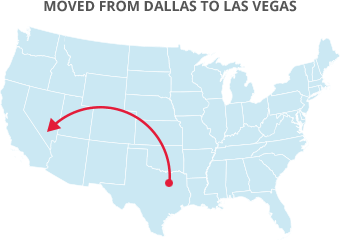

 Boxes---the single most necessary thing for any move. Whether you are moving old sports trophies to the attic or relocating your entire household across the country, you unquestionably can’t do to without a box, or even several. There are a multitude of varying sizes, and specific-use boxes, it can be really overwhelming when you're standing there staring at mountains of cardboard that are somehow going to mutate themselves into functional packing receptacles.
Boxes---the single most necessary thing for any move. Whether you are moving old sports trophies to the attic or relocating your entire household across the country, you unquestionably can’t do to without a box, or even several. There are a multitude of varying sizes, and specific-use boxes, it can be really overwhelming when you're standing there staring at mountains of cardboard that are somehow going to mutate themselves into functional packing receptacles.
The first thing to know is that while boxes are not created precisely equal, they are somewhat democratic in that you can utilize just about any box for just about any item. The feat is in being intelligent about what to pack in which box--and forget what the box is titled, go ahead and put your golf clubs in the wardrobe box, if it feels right. The other thing smart folks (that means you) do is not to overload boxes so they weigh a lot. You're going to be moving a lot of them, and six pounds feels like fifty after a while.
Sizes and Weight
Boxes are classified in cubic feet. The smallest moving box is usually 1.5 CF, and is what you will use for bulky things like books or small appliances. Knickknacks are best in these small boxes as you can put an entire collection in one box. You may see heavy-duty boxes, but just because you can pack more stuff into a box doesn't mean you should, unless you have a heavy-duty back to pick-up the weightier boxes. These boxes often have grips for easier moving and an average height person can normally move a couple of these at a time.
The next size larger is 3.1 cubic feet. This is where you will stow shoes, toys, pots and pans--things that aren't super heavy. Some of these boxes also have the built-in grips and are a bit more unwieldy than the smaller box, so do not overload this size or it is going to be no fun to pick-up and move.
Linens, jackets, towels, and clothes go in the 4.5 CF boxes. They're big and deep, and again, do not overload them because the bulk makes even the lightly packed ones a challenge to move unless you're vertically gifted.
The largest standard boxes are 6.1 cubic feet. This is where you pack pillows, lampshades, blankets, and anything that is big but lightweight.
Specialty Boxes
These are designed for moving a certain sort of thing, but are useful for lots of other items, as well. While they are a bit more expensive, are well worth the cost in convenience of packing options and security.
Dish pack
A dish pack is a box with an additional layer of corrugated cardboard. Don't think you can only place dishes in these, they are meant to protect anything fragile. A dish pack is anywhere between the 1.5 and 3.1 CF size, and you can either wrap items individually in packing paper or use the newer foam sleeves--slide the plate or glass into the sleeve and put it in the box. Some boxes have inserts for glasses, so they stand up in their spot and do not get bumped by their neighbor. A dish box is perfect for stereo components, lamp bases, or anything breakable that you do not want in the regular boxes.
Wardrobe Box
A wardrobe box is literally what it sounds like. It's taller than the 6.1 CF box, is about 10 CF, and is a heavy-duty cardboard that is meant to stand up during transit. It has a hanger bar that attaches near the top, so you can move your clothes on hangers more swiftly. The standard height for a wardrobe box is about 46 inches, so you can use them to move things like dining room chairs or those golf clubs, as well.
Mirror Box
A mirror box comes in several sizes, but they are all somewhat flat, and large. They're what you use for artwork and mirrors, but also flat screen TVs, computer monitors, large platters, or even tennis rackets.
Don't neglect the proper packing supplies--lots of paper, tape and bubble wrap--but knowing your boxes is the opening step to a successful move.

